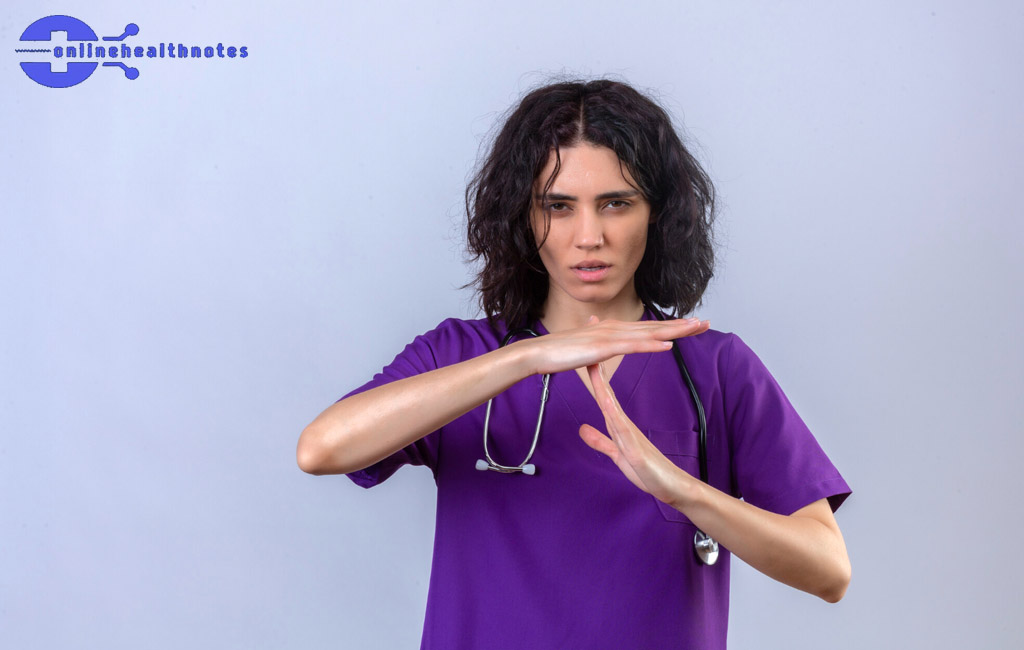Understanding Ehlers-Danlos Syndrome
Ehlers-Danlos Syndrome is a group of genetic disorders affecting connective tissues, primarily collagen, which supports the skin, joints, blood vessels, and organs. There are multiple types of EDS, each with unique symptoms and severity, but many share common signs that can appear during childhood.
Types of EDS
- Hypermobile EDS (hEDS): Characterized by joint hypermobility, frequent dislocations, and chronic pain.
- Classical EDS (cEDS): Marked by extremely stretchy skin and fragile tissues.
- Vascular EDS (vEDS): Affects blood vessels, increasing risk of rupture and internal bleeding.
- Other Rare Types: Kyphoscoliotic, Arthrochalasia, Dermatosparaxis, and more.
23 Signs You May Have Grown Up With EDS
While each individual experiences EDS differently, certain signs often appear in childhood. Recognizing multiple signs can help in seeking an early diagnosis.
| Sign | Description |
|---|---|
| 1. Hypermobile Joints | Ability to bend joints beyond the normal range; frequent dislocations and subluxations. |
| 2. Soft, Stretchy Skin | Skin that can stretch unusually and return to normal; may feel velvety. |
| 3. Unusual Scarring | Thin, wide, or “cigarette-paper” scars that heal slowly. |
| 4. Chronic Joint Pain | Persistent pain in knees, elbows, fingers, or shoulders from a young age. |
| 5. Easy Bruising | Frequent bruises from minor bumps due to fragile blood vessels. |
| 6. Frequent Sprains and Strains | Injuries from minor activities like walking or simple sports. |
| 7. Flat Feet or Foot Differences | Collapsed arches or unusual foot alignment affecting balance. |
| 8. Fatigue | Low stamina and tiredness even after normal physical activity. |
| 9. Muscle Weakness | Poor muscle tone leading to slower motor skill development. |
| 10. Early Onset Arthritis | Joint degeneration appearing in adolescence or early adulthood. |
| 11. Dental and Gum Issues | Fragile gums, frequent cavities, or loose teeth in childhood. |
| 12. Digestive Problems | Symptoms like IBS, GERD, bloating, or constipation. |
| 13. Heart and Blood Vessel Concerns | Heart murmurs, valve issues, or easy bleeding and bruising. |
| 14. Difficulty with Fine Motor Skills | Challenges in writing, buttoning clothes, or using utensils. |
| 15. Proprioception Challenges | Poor coordination, frequent tripping, and difficulty judging body position. |
| 16. Frequent Headaches | Migraines or tension headaches common from adolescence. |
| 17. Sleep Disturbances | Difficulty falling or staying asleep due to pain or joint discomfort. |
| 18. Anxiety or Sensory Sensitivities | Heightened response to touch, sound, or environmental stimuli. |
| 19. Easy Bleeding or Nosebleeds | Frequent minor bleeding episodes without significant trauma. |
| 20. Vision Issues | Myopia, retinal problems, or frequent eye strain. |
| 21. Fragile Skin | Skin prone to tearing, bruising, or developing stretch marks easily. |
| 22. Family History | Close relatives exhibiting similar signs or confirmed EDS diagnosis. |
| 23. Delayed Motor Milestones | Late walking, running, or difficulty learning coordination-based tasks. |
Recognizing EDS Early
Identifying these signs during childhood or adolescence can significantly improve management. Early intervention can reduce joint damage, prevent complications, and improve quality of life.
When to Seek a Diagnosis
- Persistent joint pain or frequent dislocations
- Unusual skin texture or scarring patterns
- Family history of EDS or connective tissue disorders
- Recurring digestive or cardiovascular issues
Diagnostic Methods
Diagnosis typically involves a combination of:
- Medical history and physical examination
- Genetic testing for EDS-related mutations
- Specialist referrals: rheumatologists, cardiologists, or dermatologists
Managing EDS Symptoms
While EDS has no cure, symptom management can enhance daily living.
Physical Therapy
- Strengthening exercises to support joints
- Stretching routines to improve flexibility safely
- Joint protection techniques to prevent dislocations
Pain Management
- Over-the-counter pain relievers
- Prescription medications for chronic pain
- Alternative therapies: acupuncture, massage, or yoga
Lifestyle Adaptations
- Energy conservation strategies to prevent fatigue
- Use of braces or supports for joints
- Dietary adjustments for digestive or vascular health
Mental Health and Support
- Counseling for anxiety or depression
- Joining EDS support groups or online communities
- Building awareness and education among family and caregivers
Pros and Cons of Recognizing the 23 Signs You Grew Up With Ehlers-Danlos Syndrome
| Pros | Cons |
|---|---|
| Early recognition of EDS allows timely medical intervention and symptom management. | Discovering you have EDS can be emotionally challenging and may cause anxiety. |
| Helps in preventing serious complications such as joint damage or vascular issues. | Frequent medical appointments and specialist visits can be time-consuming and costly. |
| Enables adoption of preventive measures such as physical therapy and joint protection. | Limited public awareness can make it difficult to find support and understanding. |
| Improves quality of life by teaching proper pain management and lifestyle adjustments. | Symptoms can be chronic and progressive, affecting daily activities and independence. |
| Facilitates genetic counseling and awareness for family members who may be affected. | Lack of a cure means lifelong management, which can feel overwhelming. |
| Allows for proper monitoring of heart, blood vessel, and digestive complications associated with EDS. | Chronic fatigue and joint instability may limit participation in sports or physical activities. |
| Encourages connection with support groups and online communities for emotional support and guidance. | Invisible symptoms such as fatigue or pain may not be understood by others, causing frustration. |
| Promotes self-awareness of body limitations, preventing further injury or overexertion. | Frequent injuries, sprains, or dislocations can impact mobility and independence. |
| Provides clarity about past unexplained symptoms, such as frequent bruising, hypermobility, or digestive issues. | Diagnosis may take years, leading to delayed treatment and prolonged discomfort during childhood. |
| Empowers individuals to advocate for their health with informed knowledge of their condition. | EDS-related pain and discomfort may require ongoing medication or therapy, adding to daily burden. |
| Understanding the signs from childhood helps prevent misdiagnosis or dismissal of symptoms. | Children and adults may experience social or psychological challenges due to physical differences or activity limitations. |
| Supports long-term planning for safe lifestyle, career, and physical activity choices. | Continuous monitoring for vascular or cardiac complications can cause stress and anxiety. |
| Awareness of EDS helps in coordinating care among multiple healthcare providers. | Finding specialists knowledgeable about EDS can be difficult depending on location. |
| Encourages research participation and contribution to rare disease awareness. | EDS can be misdiagnosed as other conditions, leading to confusion and ineffective treatments initially. |
| Improves mental health by validating experiences and symptoms that may have been overlooked for years. | Lack of public understanding may lead to social isolation or underestimation of limitations. |
Conclusion
Recognizing the 23 signs of Ehlers-Danlos Syndrome from childhood can be life-changing. While many symptoms may seem minor individually, their combination often indicates the presence of EDS. Early awareness, proper diagnosis, and effective symptom management can greatly improve long-term health outcomes and quality of life.
If you recognize multiple signs in yourself or a loved one, consult a healthcare professional for evaluation. Remember, living with EDS may be challenging, but with the right strategies and support, it is possible to lead a fulfilling, active life.
FAQ About 23 Signs You Grew Up With Ehlers-Danlos Syndrome
What is Ehlers-Danlos Syndrome?
Ehlers-Danlos Syndrome (EDS) is a genetic connective tissue disorder that affects collagen production, leading to hypermobility, fragile skin, and joint instability. Recognizing EDS early can help manage symptoms effectively.
How can I tell if I grew up with EDS?
You may have grown up with EDS if you experienced frequent joint dislocations, soft or stretchy skin, easy bruising, and chronic fatigue from childhood. Many adults discover their condition later in life after noticing these signs.
Are there specific signs in childhood that indicate EDS?
Yes, children with EDS often show signs like hypermobile joints, delayed motor milestones, frequent sprains, fragile skin, and unusual scarring. Recognizing these early signs is crucial for timely diagnosis and care.
Is hypermobility a reliable indicator of EDS?
Hypermobility alone is not definitive, but when combined with other symptoms like chronic joint pain, skin fragility, and easy bruising, it strongly suggests the presence of EDS. A specialist can provide a thorough evaluation.
Can digestive issues be a sign of EDS?
Yes, many individuals with EDS experience digestive problems such as IBS, acid reflux, or bloating. These issues often accompany the other 23 signs you grew up with Ehlers-Danlos Syndrome.
Does family history play a role in EDS?
EDS is often inherited. If close relatives have hypermobility, chronic pain, or other connective tissue issues, it increases the likelihood that you may also exhibit signs of the condition.
How is EDS diagnosed?
Diagnosis involves a combination of medical history, physical examination, genetic testing, and consultation with specialists. A comprehensive evaluation is necessary to confirm if someone grew up with EDS.
Can EDS affect heart health?
Yes, some types of EDS, particularly vascular EDS, can affect blood vessels and heart valves. Regular check-ups are important for managing cardiovascular risks associated with the condition.
Is chronic pain normal for someone with EDS?
Chronic joint and muscle pain is common in EDS. Pain management strategies, physical therapy, and lifestyle adjustments can help reduce discomfort and improve quality of life.
Can children outgrow EDS symptoms?
No, EDS is a lifelong condition. While some symptoms may become less noticeable with age, the underlying connective tissue disorder remains. Awareness of the 23 signs you grew up with Ehlers-Danlos Syndrome helps in ongoing management.
Are there treatments for EDS?
There is no cure, but treatment focuses on symptom management. This includes physical therapy, pain management, joint protection, and lifestyle modifications tailored to each individual.
Can EDS affect skin appearance?
Yes, skin may be unusually soft, stretchy, or fragile, and wounds may heal slowly with distinctive scarring. These are key indicators to consider when evaluating the 23 signs you grew up with Ehlers-Danlos Syndrome.
Does EDS impact mental health?
Chronic pain, fatigue, and mobility issues can contribute to anxiety, depression, or social challenges. Support groups, therapy, and coping strategies are essential for mental well-being.
Are all types of EDS equally severe?
No, severity varies. Hypermobile EDS is usually less life-threatening but can cause chronic pain, while vascular EDS carries higher risks due to potential blood vessel complications.
How can I support a child who may have EDS?
Support involves seeking medical evaluation, encouraging safe physical activity, protecting joints, and providing emotional support. Awareness of the 23 signs you grew up with Ehlers-Danlos Syndrome is critical for timely intervention and care.


